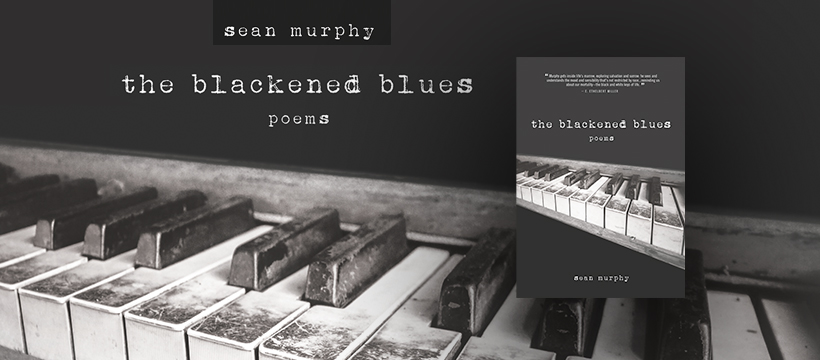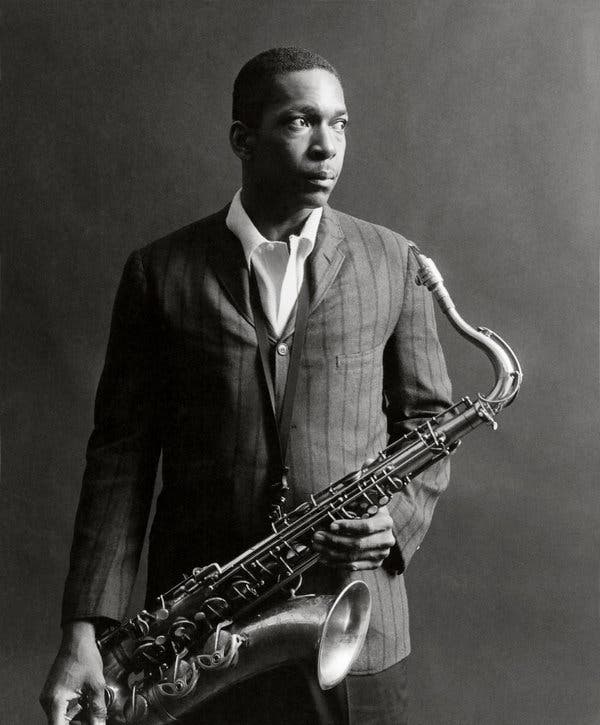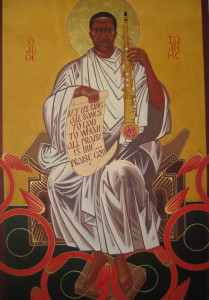
I’m happy to announce that my first poetry collection, The Blackened Blues, is available wherever you buy books (yes, *wherever*, so you don’t have to put more money in Rocket Man’s pocket; you can go directly to my publisher, Finishing Line Press, or support my pals (and 1455 partners) at D.C.’s The Potter’s House).
THE BLACKENED BLUES is part of a large and ongoing project that discusses (and celebrates) some of the author’s personal heroes who remain far less celebrated than they deserve to be. As it happens, many of them are musicians, hampered in various ways by discrimination, ranging from old fashioned racism to institutional and cultural indifference. Though there’s an elegiac sadness suffusing these poems, there’s also acknowledgment of defiant genius: they fought their battles bravely, in their art and in their lives. This collection seeks to capture something (or, hopefully, more than a few things) essential about their lives, bearing witness while also paying homage.
I’d like to introduce the collection, one poem at a time (in the order they appear in the book), and tell a little bit about the inspiration for each, by way of explanation and in tribute.
Next up is “John Coltrane’s Cancer.”
I’ve written a ton about John Coltrane, easily one of my all-time sources of light, love, and inspiration. But to tackle such a giant, creatively? It’s part of a project I’ve spent the last few years working on (more on that soon), and it’s been at once challenging and gratifying to celebrate (and interrogate) many of our cultural legends, many of whom should be household names but, sadly, are not. I’m extra grateful to Jerry Jazz Musician (a site and resource for jazz aficionados I heartily endorse) for publishing this tribute to John Coltrane in their autumn edition.
John Coltrane’s Cancer
Coltrane’s calling: all he did was everything
In his power, throwing sparks at the darkness,
Extolling what he alone conceived—the Divine
Alchemy of his own design, sheets of sound
with no barriers between pursuance, his spirit,
and interstellar space, this gift a supreme kind
Of Love.
But like some indefatigable oyster, filtering
the sins from a fathomless sea, he transformed,
instigating storms no human being can contain.
And like any authentic prophet, with fire cloaked
as expression, every revelation must supersede
the messenger, even mortality, ever insatiable as
It Is.
And so, those bilious juices grew emboldened,
their corrosive wake drowning him in everything
he tried not to be, leaving him earthbound and
anchored, even as his soul strained, relentlessly
toward infinity. And death, etiolated in the end,
silenced him much as a passing shadow consumes
The Sun.
For those whose definition of genius is either too encompassing or excessively narrow, John Coltrane poses no problems: there isn’t anyone who knows anything about music (in general) and jazz (in particular) who would contest that he’s among the most prominent, impressive and influential artists to ever master an instrument. Furthermore, to put Coltrane and the skills he developed in their simplest perspective, it might be suggested that no one has ever done anything as well as Coltrane played the saxophone. Plus, he was an exceptionally gifted composer and bandleader and, by all accounts, he was a generous and gentle human being, as well. All of which is to say, if there is anyone worthy of celebration in our contemporary American Idol Apocalypse, Coltrane should serve as both antidote and inspiration.
Coltrane’s prime years, the decade between 1957 and 1967, seem concise enough by typical human and even artistic standards. However, he recorded so much and went through so many profound changes, it’s near impossible to convey the scope of his achievements—and impact. Early on, it was apparent that Coltrane pursued his dream with an intensity bordering on obsession. “He attacked his (musical) problems,” Jimmy Heath once recalled. “He zoomed in until he solved it.” Coltrane quickly but methodically cultivated an unsurpassed proficiency, and then he kept pushing. Like Charles Mingus and Dizzy Gillespie (and many others), Coltrane initially emulated the bebop progenitor Charlie Parker and listened to western classical music, especially the work of Stravinsky. Even in his formative years, though, Coltrane was already resisting the accepted (and acceptable) limitations and straining to explore the possibilities of his instrument.
In his compositions, the quest was salvation through music: initially celebrated for his famous “sheets of sound”, Coltrane continued to expand and grow, incorporating Eastern elements and extended improvisations. His live performances became legendary endurance tests, for the audience more than the performer. Coltrane was restless, but not because he was otherwise preoccupied or tortured; indeed he was the rarest of artistic breeds: focused and serene, uncomfortable only when he was unable to practice. By all accounts, his dedication to his craft remains unrivaled.
It’s worth quoting, in full, these observations by drummer Rashied Ali, (from an interview with Howard Mandel), who played with Coltrane in the last years of his life.
He never stopped playing. When I used to go to hear ‘Trane, he would always be playing. He would be playing in his dressing room. He would be playing before he got to me. Just like a fighter would warm up in the dressing room, he’d come out in the ring and he’d be sweating from warming up, he would do the same thing in the dressing room. He would just play and play and play. He would break a sweat in the dressing room and then when he would come out on the bandstand, he had all that — I don’t know where he got that energy from. He was relentless.
He always had an instrument in his hand. He was always playing something. He was always trying to be better than he was and it seemed like, you know, how could he get better? How could he do anything better than that, than what he’s done already? And after playing all these years with all these different people…the man still had a vision that he could be better than he was and he was still practicing.
Of course, Coltrane’s music was not universally embraced during the final years he was able to record and play. His solos became longer and (much) more intense, yet no matter how many listeners he alienated, it was apparent that in order to push the audience, he first had to push himself. Roscoe Mitchell, commenting on this spiritual searching, has likened Coltrane’s later music to what he witnessed in churches growing up, with people transporting into religious trances. This—the music and the explanation—is where more than a few draw the line; it’s just too out there; too much for the human ear. Coltrane contained multitudes, but his music, after 1964, was often uncontainable.
Coltrane knew where he was going, however, even if he couldn’t quite define what he was looking for. His wife Alice remarked that Coltrane was following a “progression toward higher spiritual realization…and development.” That type of sentiment can, and perhaps should, make people wary, but with Coltrane it was no pose, and this was no joke.
It was all over far too quickly. As is too often the case with our greatest artists, Coltrane fell ill and passed away long before his time should have come. It scarcely computes, even now, that the man making the music he recorded in early 1967 (particularly the shattering if cathartic Interstellar Space) was months from losing a battle with cancer. Where he would have headed had he lived is truly difficult to imagine. It remains more than a little startling, to consider the growth and refinement he demonstrated every few years, commencing in the mid-to-late ‘50s. Where he might have gone next is anyone’s guess, but it’s also safe to surmise that he took his instrument, and music, as far as anyone possibly could.
To understand the trajectory that took Coltrane from sheets of sound to A Love Supreme, it’s instructive to consider his composition “Alabama”, recorded in 1963. Inspired by the disgraceful 16th Street Baptist Church bombing, Coltrane said of his elegy: “It represents, musically, something that I saw down there translated into music from inside me.” It is one of his enduring and devastating performances wherein Coltrane, already considered amongst jazz music’s most emotional and sensitive players, manages to articulate the grief and the rage the occasion called for. A deeply spiritual man, Coltrane conveys the immutable senselessness of violence instigated by ignorance, but also hints at the redemption of peaceful power through unified awareness. As only he could, Coltrane crafts a solo that is angry, somber, and somehow hopeful; a subdued epitaph for the innocent dead, but also a rallying cry for the not-so-innocent bystanders who needed to join the cause. The Alabama bombing was a tipping point in the civil rights movement, and Coltrane captured that moment where confusion and rage inspired an outpouring of solidarity.
A quote from Flannery O’Connor: “Dear God please help me to be an artist, please let it lead to you.” It’s clear that, for O’Connor, the journey was as important as the destination: being a good Catholic, she not only accepted that she’d have to suffer, she expected it. Coltrane’s suffering, for some time, involved the self-imposed heroin addiction he finally kicked in 1957 (years of alcohol abuse undoubtedly contributed to his eventual liver cancer). The liner notes to A Love Supreme, written by Coltrane and addressed to the audience (Dear Listener, they begin) leave little doubt what the album was “about” and exactly what inspired its creation—and its creator:
ALL PRAISE BE TO GOD TO WHOM ALL PRAISE IS DUE. Let us pursue Him in the righteous path. Yes it is true; “seek and ye shall find.” Only through Him can we know the most wondrous bequeathal. During the year 1957, I experienced, by the grace of God, a spiritual awakening which was to lead me to a richer, fuller, more productive life. At that time, in gratitude, I humbly asked to be given the means and privilege to make others happy through music.
It might be suggested we’ve never seen, in modern art, more abundant or eloquent evidence of Art leading to God than A Love Supreme. (And, if we can collectively embrace the notion that “God is Love”, no ecclesiastical concerns need sully the discussion.) It serves as a consecration of sorts, a personal yet intensely spiritual expression: finally, Coltrane was able to filter all that intensity into a perfect chalice, never before, or after, was his vision so focused yet peaceful. The music—and message—is a force of nature the listener must let wash over them, while repeated listens will refresh and renew.
Coltrane reached a point where he attempted to achieve some type of artistic if not spiritual consecration. He then went even further and sought to transcend the insanity altogether, altering consciousness through a profoundly moving colloquy. That he attempted this is remarkable; that he was able to achieve it remains miraculous.


